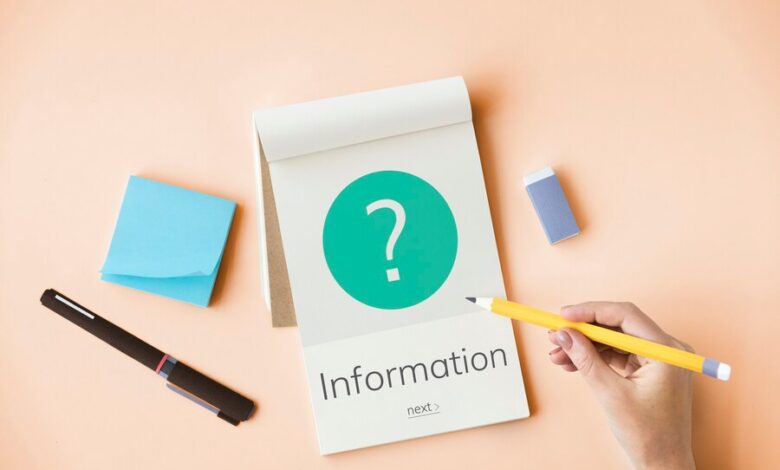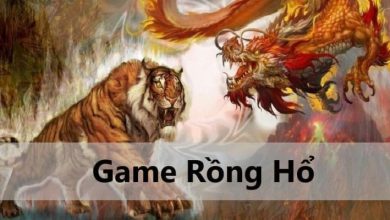
When creating content, whether it’s for a website, a blog post, or a social media update, the key question often remains: What did you include in your response? Check all that apply. This seemingly simple question encompasses a vast range of elements that are crucial to producing effective and engaging content in today’s fast-paced digital world.
The Importance of Response Strategy in Content Creation
Content creation isn’t just about writing for the sake of writing; it’s about communicating effectively with your audience and responding to their needs, questions, and challenges. Whether you’re writing a blog post, answering a customer query, or providing a tutorial, the way you structure your response can impact how well the information is received, how engaging the content is, and how it ranks on search engines.
Big websites and digital platforms that thrive on content understand this deeply. They focus on responding to user needs in ways that are informative, engaging, and aligned with best practices in SEO. So, how do you ensure your content mirrors these successful strategies?
Let’s break it down step by step, focusing on the critical components of a comprehensive response and the elements that successful websites incorporate to create highly engaging and informative content.
The First Element: Understanding the User’s Intent
Before answering the question of what did you include in your response? check all that apply., it’s essential to understand the user’s intent behind the inquiry. This is foundational for big websites when they craft content that resonates with their audience.
- What Does the User Want?: When users search for information or submit questions, they have specific needs. These could range from general knowledge, such as “What is the best way to market my website?” to more specific requests like “How do I improve my website’s SEO?” Understanding the search intent behind these queries helps you tailor your response accordingly.
- How to Structure Your Answer: To meet user intent, you need to structure your content in a way that addresses the core of their inquiry. Websites with strong content strategies break down responses into clear, digestible sections, making it easier for readers to find the information they need.
- Answering the Core Question: In the case of “What did you include in your response? Check all that apply,” it’s crucial that the response includes every key detail that aligns with what users expect. For example, a detailed article about content creation would need to explain step-by-step processes, common tools, and tips that content creators should apply.
The Second Element: Using Clear and Concise Language
Big websites are masters at conveying complex information in a simple, easy-to-understand manner. One of the fundamental goals of any response is clarity.
- Avoiding Jargon: While you may be an expert in your field, the average reader may not have the same level of understanding. Therefore, it’s essential to use clear and accessible language. In a guide that addresses the question “What did you include in your response? Check all that apply”, avoid technical jargon unless it’s explained thoroughly.
- Using Bullet Points and Lists: To keep the content readable, break up large blocks of text with bullet points or numbered lists. These visual cues help readers easily follow along and check off the important details they want to know.
- Simplifying Complex Ideas: Big websites know that concise explanations are often the most powerful. They aim to deliver value without overloading the reader with information. In this case, the response should avoid going into unnecessary depth unless the topic calls for it. Keep things focused and to the point.
The Third Element: Keyword Optimization for SEO
Search engine optimization (SEO) is vital for ensuring your content ranks well on search engines. Big websites have mastered the art of balancing valuable content with smart keyword usage.
- Strategic Use of Keywords: In an article answering “What did you include in your response? Check all that apply,” it’s essential to integrate relevant keywords, including the long-tail keyword itself, without overstuffing. Use the keyword naturally throughout the text, especially in the introduction, conclusion, and subheadings.
- Optimizing for Long-Tail Keywords: To improve ranking, big websites often target long-tail keywords like “what did you include in your response? check all that apply in content strategy”. These phrases capture more specific user queries and are typically easier to rank for than shorter, highly competitive keywords.
- Internal and External Linking: Another key element is linking to other relevant articles on your website. Big websites often link internally to related posts, providing readers with more context and improving SEO. Furthermore, they link to high-authority external sources that enhance the credibility of the content.
The Fourth Element: Engaging and Interactive Content
Effective responses not only provide useful information but also engage readers. The goal is to make your content as interactive as possible, encouraging the reader to stay on the page longer and take action.
- Encouraging User Interaction: One of the best ways big websites engage their audience is through interactive elements like comment sections, polls, or quizzes. You can ask readers to leave a comment below or check all the steps that apply to their situation. This helps build a community around your content.
- Multimedia Integration: Including images, videos, infographics, and other multimedia elements can significantly boost user engagement. Visuals not only break up the text but also reinforce the key points being made. For instance, a tutorial on how to create content could include screenshots, step-by-step video guides, or even downloadable resources.
- Clear Calls-to-Action (CTAs): Don’t forget to tell your readers what to do next. At the end of the article, a strong CTA such as “Check out our other content on content strategy” or “Download our free guide to content marketing” can direct the reader toward further engagement.
The Fifth Element: Providing Value and Relevance
Big websites know that content must be valuable and relevant to the audience. This is a vital part of “what did you include in your response? check all that apply.” Without value, the content simply won’t resonate.
- Answering All Aspects of the Question: When users ask a question, they often expect a comprehensive answer. A great response includes all aspects of the query, leaving no stone unturned. If the question is broad, break down the answer into smaller, manageable sections.
- Giving Actionable Advice: Readers come to websites for advice that they can act on. When you respond to “What did you include in your response? Check all that apply,” make sure to provide actionable tips that can help readers implement the advice right away. Whether it’s a tool, a checklist, or a step-by-step process, ensure that the response helps them make progress.
- Staying Current and Relevant: Content needs to stay up-to-date. Big websites constantly update their content to ensure that the information they provide is current and relevant. In this fast-evolving digital world, responding with outdated information can lead to a loss of trust. Regularly review your content and refresh it as necessary.
The Sixth Element: Building Trust and Authority
One of the most important factors that successful websites focus on is trust-building. Providing accurate, reliable, and transparent information establishes your site as an authority in its field.
- Citing Reliable Sources: Trust is built on credibility. When providing a response to “what did you include in your response? check all that apply.,” always support your claims with credible sources. Whether citing a study, linking to a reputable website, or quoting an expert, these external sources add authority to your content.
- Transparency and Honesty: Be transparent in your content. Don’t make exaggerated claims, and be upfront about any limitations in your answer. If there are aspects you cannot cover in the response, acknowledge it and point readers to additional resources.

Conclusion
When it comes to crafting the perfect response—“what did you include in your response? check all that apply.”—success lies in a well-rounded, thoughtful approach. By understanding your audience’s intent, using clear and concise language, optimizing for SEO, engaging readers, providing value, and building trust, your content will be in line with the best practices followed by top-tier websites.
The key takeaway is that each element of your response should work together harmoniously. Whether it’s your keyword strategy, your multimedia integration, or your call-to-action, all aspects should contribute to delivering a comprehensive, engaging, and valuable piece of content that resonates with your readers and ranks well on search engines.
By following these strategies and adapting them to your own content creation process, you can create content that not only answers “what did you include in your response? check all that apply.” but also provides a complete and satisfying experience for your audience.





